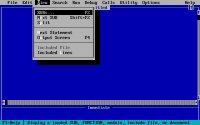The main processor right now is a Laptop running a packet sequencer I wrote in EXCEL utilizing the built in VBA to send serial data.
Hola Beau Schwabe
If the TS does not opose, could you elaborate on that. I always foun difficulties of different kinds to acchive it. The function serial comm never being available, the most frequent.
A legal version of current Win 10 and 2016 (IIRC) of Excel could make it? I am not scared of VBA.
If deemed convenient I could start a thread. Gracias.





 then some nonvolotile Toshiba -13.8 volts to 'write / save' before shut down' unfortunatly was prone to static corruption..
then some nonvolotile Toshiba -13.8 volts to 'write / save' before shut down' unfortunatly was prone to static corruption..